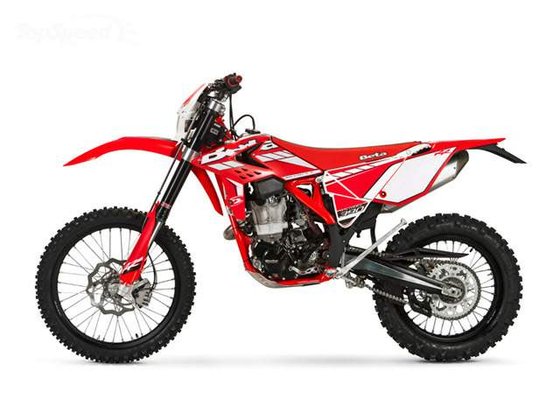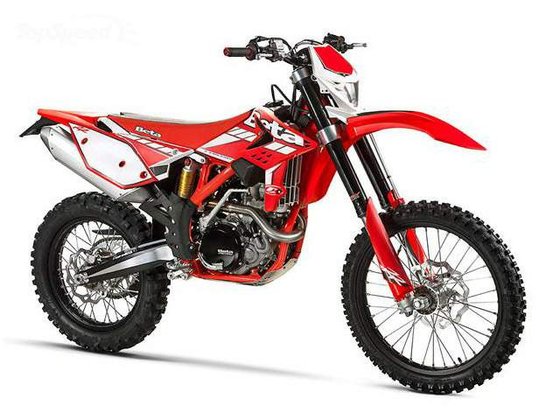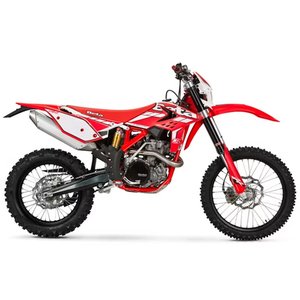Beta RR 390 (2015-2019) Review: The Sweet-Spot Enduro for Technical Terrain Warriors

Introduction
The Beta RR 390 (2015-2019) occupies a rare space in the enduro world - a middleweight four-stroke that prioritizes finesse over brute force. Designed for riders who want to dance through technical trails rather than bulldoze through them, this Italian machine blends the lightweight agility of a 250cc with enough torque to climb like a 450. After spending a day wrestling it through rocky Appalachian single-track and fast Midwest hare scrambles terrain, I’m convinced this generation remains one of Beta’s most compelling off-road packages.
Design & Ergonomics: Built for Human-Sized Riders

At first glance, the RR 390’s proportions feel refreshingly old-school. The 85.8-inch (2,180 mm) length and 37-inch (940 mm) seat height create a cockpit that’s roomy enough for 6-foot riders yet manageable for shorter pilots. Beta’s 2015 updates introduced a seat foam that’s 20% softer than previous models - a godsend during eight-hour endurance races, though still firm enough for precise body positioning.
The real magic happens in the details:
- Airbox Access: Side-mounted filter changes take 90 seconds (tested with muddy gloves)
- Handlebar Setup: Race Edition pad and ProTaper bend offer a natural standing position
- Fuel Management: 2.1-gallon (8L) tank forces strategic pit stops but keeps weight low
Ground clearance of 12.6 inches (320 mm) proved sufficient for most log crossings, though serious rock crawlers might still opt for a skid plate upgrade from MOTOPARTS.store’s catalog.
Engine Performance: The Goldilocks of Thumpers
The 385.6cc DOHC powerplant is where Beta’s “Easy-To-Ride” philosophy shines. Cold starts with the Keihin FCR-MX39 carburetor required three priming kicks (choke on) in 50°F (10°C) morning air, but once warm, the electric starter never faltered.
Power Delivery Breakdown:
| RPM Range | Character | Ideal Use Case |
|------------|-----------|----------------|
| 2,000-4,500 | Tractor-like torque | Technical climbs, log steps |
| 5,000-7,500 | Linear surge | Hill climbs, deep mud |
| 8,000+ | Overrev safety net | Missed shifts, panic revs |
The six-speed transmission’s ratios feel spaciously gapped - 2nd gear handled 8mph (13km/h) rock gardens while 3rd pulled cleanly to 45mph (72km/h) on fire roads. Clutch pull is 15% heavier than a hydraulic system but offers better modulation in technical sections.
Suspension & Handling: Precision Over Plushness
Beta’s 48mm Sachs fork and twin-piston rear shock prioritize responsiveness over luxury. At 185 lbs (84 kg) in gear, I ran these settings:
Front (48mm Sachs USD):
- Compression: 12 clicks out
- Rebound: 14 clicks out
- Oil height: 110mm
Rear (Sachs Shock):
- High-speed comp: 1.5 turns
- Low-speed comp: 10 clicks
- Rebound: 14 clicks
The 11.4 inches (290 mm) of travel feels deceptively short due to the progressive damping. Hard bottoming occurred only during flat-landings from 5-foot (1.5m) drops. For aggressive riders, MOTOPARTS.store offers shim kit upgrades to increase bottoming resistance.
Competition: How the Beta RR 390 Stacks Up
1. KTM 350 EXC-F
- Power: +8hp but more abrupt delivery
- Weight: 240 lbs vs Beta’s 247 lbs (dry)
- Suspension: WP XPLOR lacks Beta’s mid-stroke control
- Best For: Desert racers needing top-speed stability
2. Husqvarna FE 350
- Ergonomics: Narrower seat cramps thigh position
- Maintenance: 13-hour oil intervals vs Beta’s 15-hour
- Best For: MX-track hybrid riders
3. Yamaha WR250F
- Torque: 30% less low-end grunt
- Reliability: Air filter changes take twice as long
- Best For: Budget-focused trail newbies
Beta’s Edge: The RR 390’s carbureted engine avoids EFI stalling issues at ultra-low RPM, while the steel frame absorbs trail chatter better than Austrian chromoly designs.
Maintenance: Keeping the Italian Stallion Happy
Critical Service Intervals
- Oil Changes: Every 15 engine hours (Motorex Cross Power 4T 10W-50 recommended)
- Air Filter: Clean every 10 hours (no-tool design simplifies this)
- Valve Checks: 30 hours (shims rarely need adjustment before 100hrs)
- Piston Rings: Replace at 200 hours (sooner if losing compression)
Pro Tips:
- Use MOTOPARTS.store’s magnetic drain plug to catch ferrous debris
- Upgrade to a Twin Air filter with pre-oiled inserts for dusty conditions
- Replace chain rollers annually - the stock units wear faster than Japanese bikes
Conclusion: Who Should Buy the Beta RR 390?
This generation remains ideal for:
- Technical Trail Experts: Riders who value precision over horsepower
- Enduro Transitioners: 250F riders needing more torque without 450 weight
- Vintage Soul Riders: Carburetor loyalists who enjoy tinkering
While newer EFI models offer easier starting, the 2015-2019 RR 390’s combination of steel frame flex, tractable power, and Italian character make it a future classic. For owners looking to enhance reliability, MOTOPARTS.store’s upgraded cooling system parts and hour-meter kits help maximize this Beta’s already impressive longevity.
Specifications sheet
| Engine | |
|---|---|
| Stroke: | Four-stroke |
| Ignition: | AC-CDI, Kokusan |
| Spark plug: | NGK LKAR 8A-9 |
| Fuel system: | Keihin FCR-MX39 carburetor |
| Displacement: | 386 ccm |
| Configuration: | Single |
| Cooling system: | Liquid-cooled |
| Starting system: | Electric and kick |
| Compression ratio: | 12.5:1 |
| Lubrication system: | Forced, dual oil pumps |
| Number of cylinders: | 1 |
| Dimensions | |
|---|---|
| Wheelbase: | 1490 mm (58.7 in) |
| Dry weight: | 112 |
| Seat height: | 940 mm (37.0 in) |
| Fuel reserve: | 1.3 L (0.3 US gal) |
| Overall width: | 807 mm (31.8 in) |
| Overall height: | 1270 mm (50.0 in) |
| Overall length: | 2180 mm (85.8 in) |
| Ground clearance: | 320 mm (12.6 in) |
| Fuel tank capacity: | 8.0 L (2.1 US gal) |
| Drivetrain | |
|---|---|
| Clutch: | Wet multi-disc |
| Final drive: | chain |
| Transmission: | 6-speed |
| Primary drive ratio: | 28:76 |
| Chassis and Suspension | |
|---|---|
| Frame: | Molybdenum steel double cradle |
| Rear wheel: | 2.15 x 18 |
| Front wheel: | 1.60 x 21 |
| Rear brakes: | Single 240 mm disc, 1-piston floating caliper |
| Front brakes: | Single 260 mm wave disc, 2-piston floating caliper |
| Rear suspension: | Sachs shock, adjustable rebound and hi/low speed compression |
| Front suspension: | 48 mm Sachs USD fork, adjustable compression and rebound |
| Rear wheel travel: | 290 mm (11.4 in) |
| Front wheel travel: | 290 mm (11.4 in) |


















